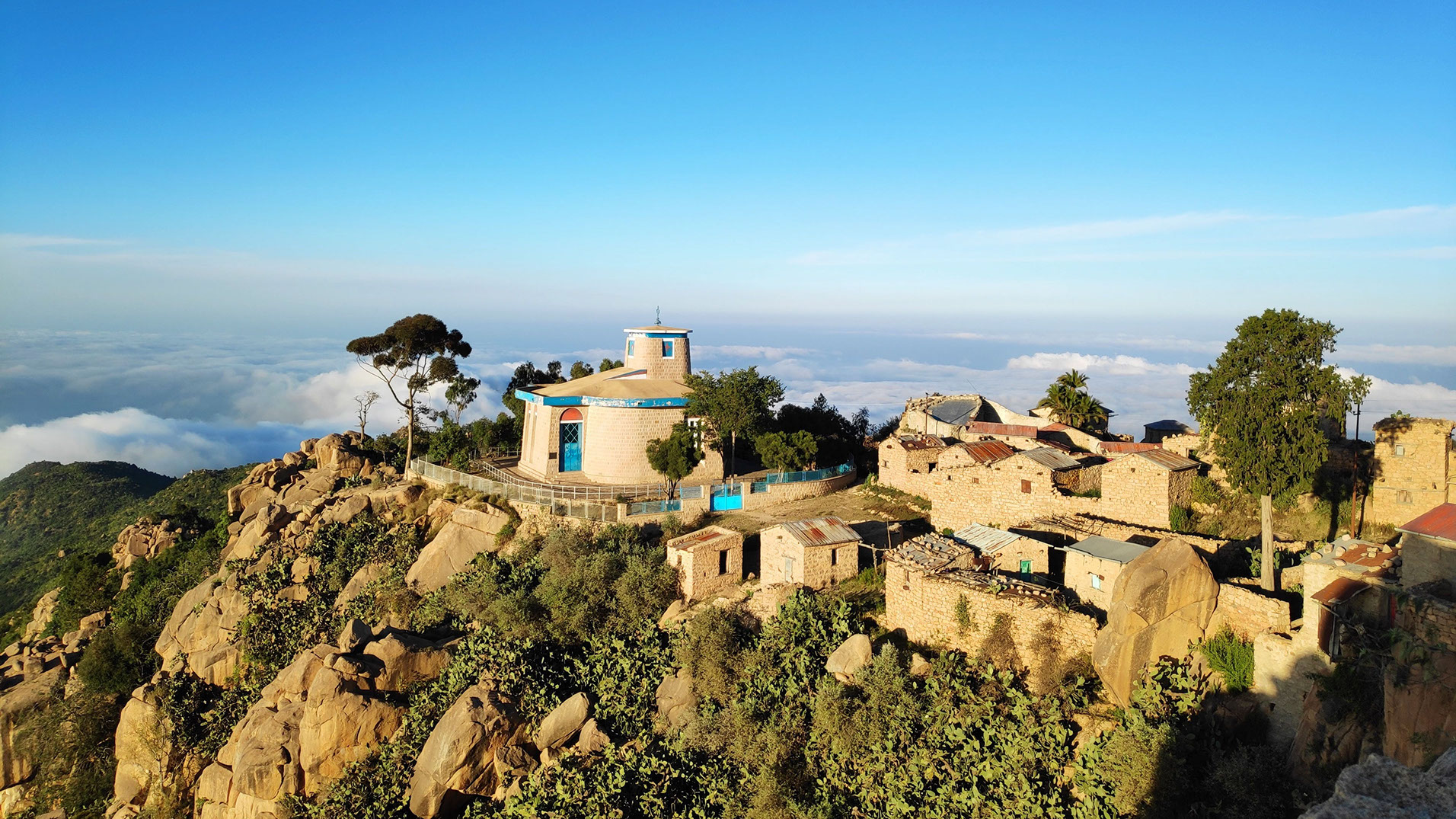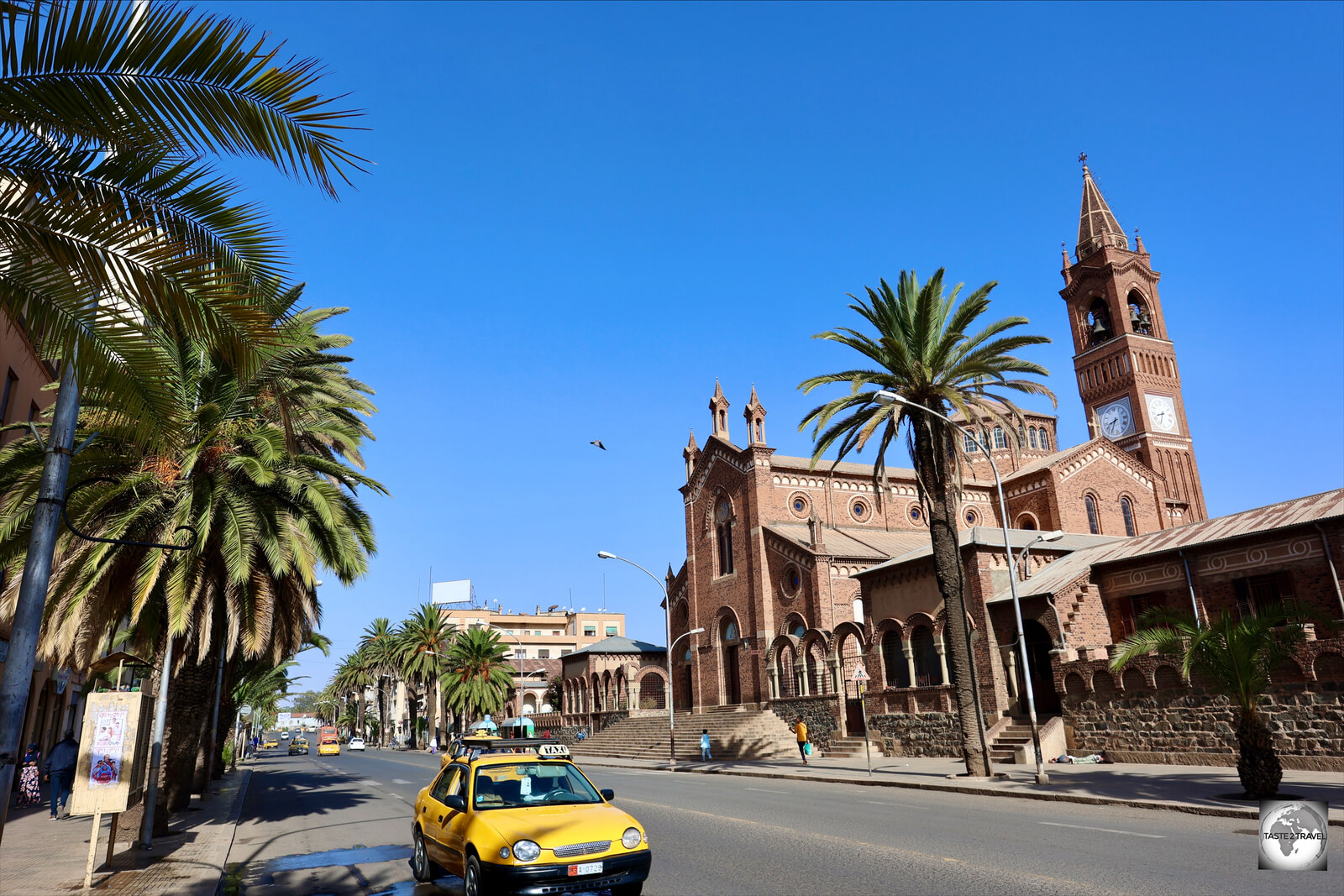Eritrea Travel Guide: Exotic Adventures and Cultural Wonders

Overview of Eritrea
Geographical Location
Eritrea, situated in the Horn of Africa, boasts a unique geographical position that enhances its allure as a travel destination. Bordered by Sudan to the west, Ethiopia to the south, and Djibouti to the southeast, it has a significant coastline along the Red Sea that stretches approximately 1,200 kilometres. This coastline not only provides stunning beaches but also serves as a gateway to various islands, including the Dahlak Archipelago, known for its breathtaking coral reefs and marine biodiversity.
Eritrea’s topography is equally diverse, with its highlands offering an elevation of up to 2,000 metres above sea level, creating a striking contrast with the lowland coastal regions. The country’s varied landscapes, ranging from arid deserts to lush mountains, make it a captivating place for nature enthusiasts.
Brief History
Eritrea's history is rich and complex, shaped by various influences over the centuries. The region has been inhabited since prehistoric times and has witnessed the rise and fall of numerous civilisations. In the late 19th century, Eritrea fell under Italian colonial rule, marking a significant shift in its socio-political landscape. Italian influence can still be seen today, particularly in Asmara's architecture, which features a remarkable blend of modernist and Art Deco styles.
Following Italian occupation, Eritrea entered a phase of conflict and struggle for independence, culminating in a 30-year war against Ethiopian control that began in the 1960s and ended in 1993. This hard-fought struggle led to Eritrea becoming an independent nation, earning it a place on the world map as one of Africa's newest countries.
Today, Eritrea stands as a testament to resilience, with its vibrant culture and rich heritage waiting to be explored. The blend of indigenous traditions and colonial influences can be experienced throughout the country, inviting visitors to uncover its many stories. For inspiration on crafting an itinerary, see 6 incredible things to add to your Eritrea travel bucket list.

Planning Your Eritrea Trip
Visa Requirements
Before embarking on an adventure in Eritrea, understanding visa requirements is crucial for a smooth journey. Most visitors will need a visa to enter the country, which can typically be obtained through Eritrean embassies or consulates abroad.
Key points regarding visa requirements:
- Types of Visa: The most common visa is the tourist visa, valid for 30 days, but extensions may be granted within Eritrea.
- Application Process: Depending on your nationality, some may apply for a visa on arrival, while others will need to secure it prior to travel.
- Documentation Needed: Ensure you have a valid passport, recent passport-sized photographs, and possibly proof of accommodation and travel itinerary. For an at-a-glance overview to cross-check your plans, check Lonely Planet's guide..
Best Time to Visit
When planning your trip, the timing can greatly enhance your experience. The best time to visit Eritrea is between October and April, when the weather is much milder, making it perfect for exploration.
- Wet Season: June to September experiences heavy rainfall, particularly in the highland areas, which could impede outdoor activities but may be great for witnessing the lush landscapes.
- Cultural Events: Consider timing your trip to coincide with local events, such as Eritrean Independence Day on May 24, which showcases vibrant celebrations across cities.
Currency and Money Matters
Eritrea's official currency is the Nakfa (ERN). When it comes to money matters, the following tips can help keep your travel hassle-free:
- Currency Exchange: It’s advisable to exchange currency upon arrival, as bank facilities in rural areas are limited.
- Cash is King: Credit and debit cards are not widely accepted, so burning a hole in your pocket with cash is essential for daily expenses.
- Budgeting: Prices can be reasonable, but budgeting for excursions, meals, and experiences will ensure a smooth trip. For independent logistics and on-the-ground tips, see this field guide from Against the Compass.
By gathering this information, travellers can adequately prepare for their Eritrean escapade, leading to an enriching and enjoyable experience in this unique country
Exploring Eritrean Culture
Traditional Cuisine
Eritrean culture is vibrantly expressed through its traditional cuisine, which invites everyone to experience a delightful tapestry of flavours and aromas. Much of Eritrea’s culinary heritage is influenced by its diverse ethnic groups and geographical features, resulting in dishes that are often hearty and beautifully seasoned.
- Injera: The staple food of Eritrea, injera, is a sourdough flatbread made from teff flour. It serves as the base for various dishes, typically piled high with a variety of stews (known as
tsebhi) made of lentils, meat, and vegetables. - Spicy Stews: Eritrean stews are richly spiced with berbere, a blend of chilli peppers and other spices, making each dish burst with flavour.
- Popular Dishes:
- Zigni: A spicy meat dish usually served with injera.
- Shiro: A tasty chickpea stew, perfect for vegetarians.
- Salta: A perfect blend of vegetables and spices that warms the soul.
Dining is often a communal experience, where family and friends gather around a large platter of injera and stews, eating with their hands, which adds to the intimacy and enjoyment of the meal.
Cultural Festivals and Events
Eritrea’s rich history is celebrated through vibrant festivals and events that unfold throughout the year. These occasions provide a glimpse into the country’s traditions, bringing people together in joyous celebration.
- Independence Day (May 24): This is one of the biggest national celebrations in Eritrea, commemorating the country's liberation from Ethiopian rule. With parades, musical performances, and exhibitions, it is an event bursting with passion and patriotism.
- Cultural Festivals: Various cultural festivals highlight different ethnic traditions, showcasing dances, music, and traditional attire. The most famous is perhaps the
Asmara Festival, where food, music, and art converge to create an unforgettable atmosphere.
Experiencing Eritrea’s culinary delights and cultural festivities provides profound insights into its people's lives, traditions, and an enriching connection to the rich tapestry of Eritrean identity.
Top Attractions in Eritrea
Asmara: The Capital City
Asmara, the capital city of Eritrea, is often referred to as "Africa’s Milan" due to its stunning blend of colonial architecture and modernity. Visitors are captivated by the city's orderly layout and vibrant street life.
- Architectural Marvels: The city boasts many buildings from the Italian colonial era, such as the Fiat Tagliero Building and the Opera House, which showcase an elegant Art Deco style.
- Cafes and Culture: Asmara is also famous for its cafes, where one can indulge in a cappuccino or espresso, reminiscent of Italian coffee culture.
- Museums and History: Don't miss the National Museum of Eritrea, which offers a fascinating insight into the country's history, art, and culture.
Exploring Asmara allows travellers to immerse themselves in both the historical and contemporary pulse of Eritrean life.
Dahlak Archipelago
A short boat ride from Massawa leads to the breathtaking Dahlak Archipelago, an enchanting collection of over 200 islands known for their pristine beaches, crystal-clear waters, and vibrant coral reefs.
- Diving Paradise: For diving enthusiasts, this area presents one of the best diving spots in the Red Sea, where one can marvel at colourful marine life, from exotic fish to intricate coral formations.
- Island Life: The islands also offer a serene escape to enjoy sunbathing, snorkelling, or simply relaxing in a tranquil environment, perfect for those seeking a getaway from urban life.
The Ancient Port City of Massawa
Massawa, an ancient port city, stands as a testament to Eritrea's rich maritime heritage.
- Historical Significance: With a history dating back to ancient times, Massawa showcases a mix of Ottoman and Italian architecture, visible in its picturesque buildings and ruins.
- Cultural Encounter: Visitors can explore the vibrant markets, savour fresh seafood, and enjoy the laid-back atmosphere while experiencing the warmth of local hospitality.
These attractions form a rich itinerary for anyone looking to explore Eritrea's diverse landscapes and historical significance, ensuring an unforgettable travel experience.
Adventure Activities in Eritrea
Scuba Diving in the Red Sea
For those seeking an underwater adventure, scuba diving in the Red Sea around Eritrea is truly exceptional. This region is renowned for its remarkable marine biodiversity, vibrant coral reefs, and shipwrecks that tell stories of the past.
- Diving Sites: The Dahlak Archipelago features some of the best dive sites, with crystal-clear waters and an abundance of marine life such as colourful fish, sea turtles, and even dolphins.
- Accessibility: Many dive operators in Massawa offer guided excursions that cater to both novice and experienced divers. Instructors are available to ensure a safe and enjoyable experience.
- Underwater Experiences: Imagine descending into the azure depths, surrounded by schools of fish and exploring submerged shipwrecks, which provide a unique glimpse into Eritrea's maritime history.
Scuba diving in the Red Sea not only provides thrilling encounters with nature but also offers breathtaking views of the underwater landscape that leave divers in awe.
Trekking in the Filfil Reserve
Apart from aquatic adventures, Eritrea's land offers incredible trekking opportunities, particularly in the Filfil Reserve. Nestled in the mountainous region, this reserve is a hidden gem for trekking enthusiasts.
- Stunning Scenery: The Filfil Reserve is characterised by lush forests, rolling hills, and diverse wildlife. The beauty of the surroundings makes every step a joy, whether you're a casual hiker or an experienced trekker.
- Wildlife Encounters: Trekking here offers the chance to see unique flora and fauna, including endemic species. Keep an eye out for the elusive Ethiopian wolf, one of the world’s rarest mammals.
- Cultural Immersion: While trekking, hikers might also encounter local communities, providing an opportunity to learn about traditional lifestyles and practices.
Embarking on a trekking adventure in the Filfil Reserve allows visitors to fully appreciate Eritrea’s natural beauty while enjoying the tranquillity and adventure that come with exploring its rugged landscapes. These activities create lasting memories and a deeper connection to the stunning country of Eritrea.
Safety Tips for Travelling in Eritrea
Health Precautions
When preparing for a trip to Eritrea, prioritising health precautions can significantly enhance safety during travel. Awareness of health-related factors will allow visitors to enjoy their adventures without unnecessary worries.
- Vaccinations: It’s advisable to be up to date with routine vaccinations. Additionally, vaccinations for diseases such as hepatitis A, hepatitis B, typhoid, and yellow fever may be recommended, depending on individual travel plans.
- Malaria Prevention: Malaria is a risk in Eritrea, especially in lowland areas. Consider using antimalarial medication as prescribed by a healthcare provider and take measures to avoid mosquito bites, wear long sleeves and use insect repellent.
- Water and Food Safety: To avoid gastrointestinal issues, drink bottled water and consume well-cooked meals. It’s wise to stay cautious with street food, while it may be tempting, ensuring cleanliness is key to enjoying Eritrean cuisine safely.
Local Customs and Etiquette
Understanding and respecting local customs is essential for a fulfilling visit to Eritrea. This connection with culture not only enhances the travel experience but also builds rapport with local communities.
- Greetings: A warm greeting goes a long way. A simple “selam” (hello) can be a nice way to start interactions. Shaking hands with men, and often with women too, is customary, although the latter could be approached with caution to respect personal boundaries.
- Dress Code: Modest attire is appreciated, particularly in rural or conservative areas. Women may want to wear long skirts or dresses, while men should avoid shorts in such settings, ensuring respect for local sensibilities.
- Dining Etiquette: Meals are typically shared in Eritrean culture, often served on a communal platter. Eating with the right hand is customary, so it’s good to practice this habit to engage fully with the cultural dining experience.
For a candid first-hand perspective on routes, checkpoints, and general travel feel, this narrative from Very Hungry Nomads is a useful companion to your planning.

Sustainable Travel Practices in Eritrea
Eco-Friendly Accommodation Options
When travelling through Eritrea, choosing eco-friendly accommodation can greatly contribute to the sustainability of your journey. Many hotels and lodges are now embracing green practices that benefit both the environment and local communities.
- Green Certifications: Look for accommodations that have been certified for their sustainable practices. These may incorporate solar energy systems, water conservation techniques, and eco-friendly cleaning supplies.
- Local Ownership: Opting for locally owned guesthouses not only enhances the travel experience by providing authentic insights into Eritrean culture but also helps to keep money within the community. For instance, some guesthouses in Asmara are known for their hospitality and commitment to sustainability.
- Community Involvement: Some properties align with local initiatives, such as bio-gardens or recycling programmes. Staying at places that support local culture helps visitors engage with the community more meaningfully.
Responsible Tourism Initiatives
Supporting responsible tourism initiatives is imperative for preserving Eritrea’s unique environment and rich heritage. This can be facilitated by being aware of and participating in various local initiatives.
- Conservation Projects: Many organisations focus on protecting local wildlife and natural habitats. Visitors are encouraged to support these initiatives, whether through donations or by participating in volunteering opportunities.
- Cultural Preservation: Engaging with local artisans and craftspeople helps in promoting traditional skills while ensuring that these cultural practices continue to thrive. Avoiding mass-produced souvenirs and opting for handmade items supports local economies.
- Educational Tours: Participating in guided tours that focus on cultural education and environmental awareness can provide deeper insights into Eritrean history and natural landscapes. For ethics-first planning pointers, read Responsible Travel’s Eritrea guide.
By adopting sustainable travel practices, visitors can help preserve Eritrea’s stunning landscapes and heritage, ensuring that future generations can also enjoy this remarkable destination. Through eco-friendly accommodations and responsible tourism initiatives, each traveller contributes to a more sustainable and enriching experience.
